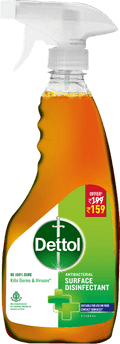
Kitchen Hygiene - Food safety and hygiene
The Four Cs: Food and Kitchen Hygiene
It is the highest form of ignorance to think that food safety is only a concern when we are eating from outside. The meals you prepare at home can be a source of food poisoning too. So whether you are going food shopping, preparing food at home or organizing a party, picnic, or barbecue, there are simple hygiene tips that you can follow, which will help you avoid food poisoning.
All you need to keep in mind are the ‘Four Cs’ – cleaning, cooking, chilling, and cross-contamination. If you have the ‘Four Cs’ on the check, it will be easier to identify and evade possible source of food poisoning.
Cleaning
At this moment, your hand could be carrying germs – thousands of them. They are undetectable, and can easily become a part of your food, making your near and dear ones ill.
You can stop this attack before it’s too late! Keep yourself and your kitchen safe by washing and drying your hands thoroughly:
- Before you prepare food
- After coming in contact with raw food, especially meat
- After going to the loo
Always remember to keep worktops, chopping boards, and utensils clean. You can use Dettol healthy kitchen gel, which not only makes your utensils visibly clean, but also hygienically safe. If they have come in contact with raw meat, poultry or eggs, make sure you wash them thoroughly.
Don’t forget to replace dish cloths and tea towels frequently. There are chances it might look clean, but it is a perfect place for germs to breed.
Cooking
I don’t want to scare you, but germs like salmonella and E. Coli are lurking around you, waiting to strike anytime.
However, the easiest way to get rid of them is by thorough cooking:
- Make sure you follow the instruction on the table
- Ensure that your food is steaming hot in the middle – there should be steam coming out
- Reheat your food only once
- While reheating, ensure your food is cooked completely
While dealing with food products like poultry, pork, burgers, and sausages, ensure that it is cooked all the way through. If the meat is still pink or the juices have any pink or red, there are chances that germs are still alive and active.
Chilling
Stop the growth of germs by keeping the food cold. Ensure that you are stocking your fridge with the right products. If used effectively, our fridge is your best ally in the war against germs. Here are certain things that you need to remember:
- Set the right temperature (between 0°C and 5°C)
- Keep the door of the fridge closed as much as possible
- Wait for food to become cold before you put it in the fridge
- If your fridge is full, kill the germs by lowering the temperature
Even with all these efforts, some germs manage to survive in cold temperatures. To help protect your food, eat leftover food within two days.
Cross Contamination
This is the last and final operation in your battle against germs. Germs shouldn’t be allowed to multiply in your kitchen and contaminate food that is ready to eat. This is the major reason behind food poisoning.
However, below mentioned are few simple things that you can keep in mind and prevent it from happening:
- Always store raw meat and unwashed vegetables away from ready-to-eat food during storage and preparation.
- Don’t let liquid oozing out of raw meat drip onto other food. Always keep it in sealed container at the bottom of the fridge
- Abstain from using the same chopping board for raw meat and ready-to-eat food unless you wash the board properly in between.
If you take care of the above 4 Cs, rest assured knowing that your mealtime would be safe.
Disclaimer: All reasonable steps have been taken to ensure the accuracy of the published material (“Material”), however the Material shall not be treated as medical advice in any manner. The Material is not intended to be a substitute for professional medical advice, diagnosis or treatment. Please consult a qualified doctor for any form of medical advice and guidance. The Material is published without warranty of any kind, either expressed or implied. The responsibility for the interpretation and use of the Material lies with the reader. In no event shall Reckitt Benckiser (India) Private Limited or its affiliates be liable for any damages or any other consequence arising from the use of the Material.”


